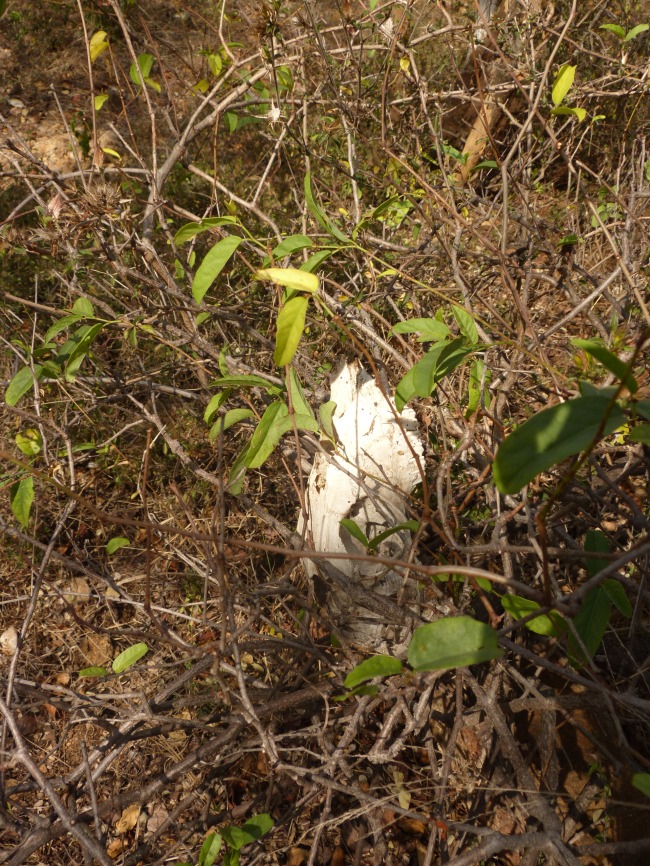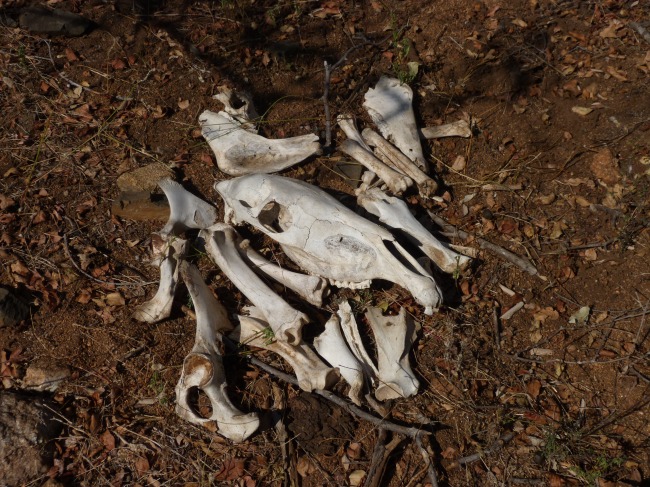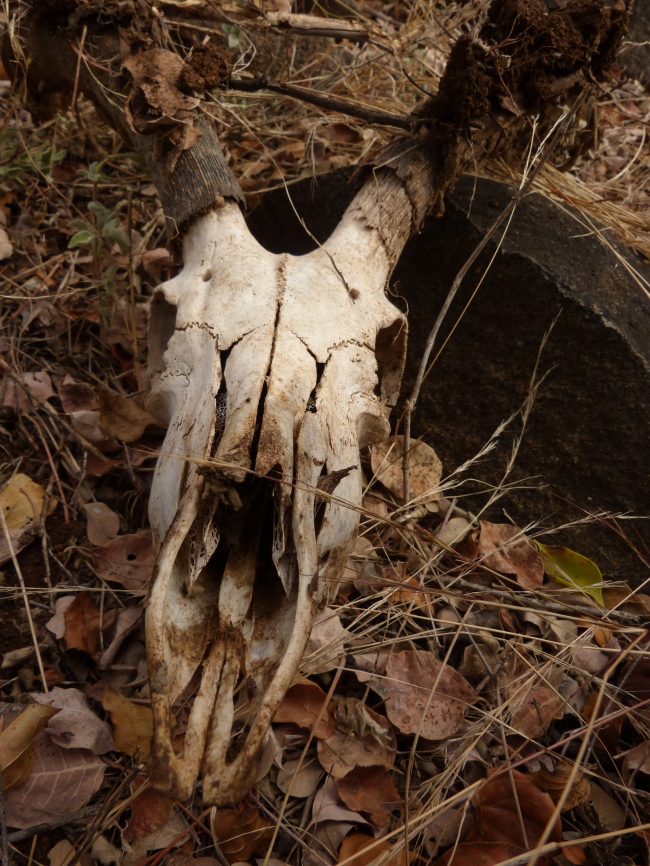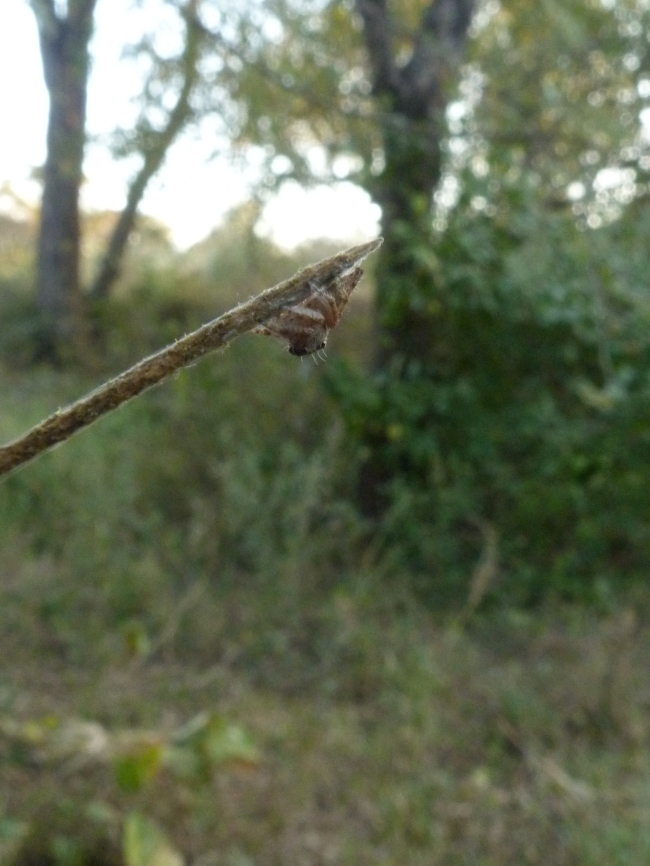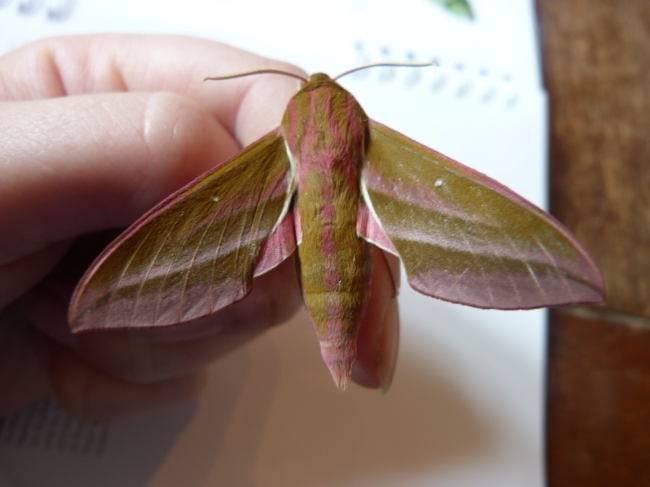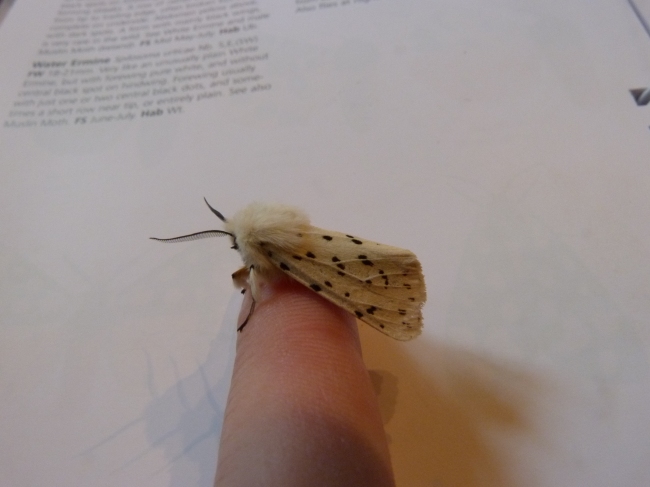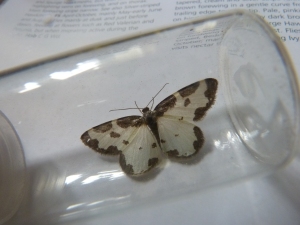These aren’t the mongoose you’re looking for
Also known as, the frustrating third week. It started off hopefully, looking for a dwarf mongoose group I’d not yet met. However, after two days of walking through the bush without finding them, my mood was not so cheerful. That isn’t to say I didn’t enjoy those two days, I saw a number of new insects and birds, and potentially even a crocodile down at the waterhole! I’m undecided about this last one. I had just arrived at the waterhole, when I saw something rather large on the opposite side, sliding into the water. Logic indicates that it probably was a crocodile.
 The waterhole/lake where I (maybe) saw the crocodile
The waterhole/lake where I (maybe) saw the crocodile
The following days I was with a different group, one that found easily. They are a lovely group, though following them through the scrub was quite exasperating as the weather was quite cool and chilly. When the wind blows, foraging mongoose just stop their activity, leaving you to panic that you’ve lost them because they’ve moved during the windy time and you didn’t hear. Sometimes true, sometimes they have just stopped moving. I lost them once that way, and spent a couple of hours wandering around calling them. At one point, I thought I had found them, but it turned out to be a neighbouring group where their territory overlaps. I rewarded the group nonetheless for coming to my call. The training needs to be reinforced even if they weren’t the mongoose I was looking for. I lost them again the following day, but luckily found them both times.
To cap off the week, I spent Saturday with a recently habituated group. This meant moving slowly and carefully throughout the day, trying not to cause an alarm call and for them to scatter in all directions. As a recent group, only a few are comfortable coming close, but I’d been told of a confident individual. I was a little wary, confident individuals in other groups are usually quite bad-tempered and growl at the others for the food, or spend the whole time in the weights box. This one was different though, she was calm and patient, able to handfeed without biting your finger. But what made me fall for her was the fact that she licks your fingers to get the crumbs of food. She is absolutely adorable. Later in the day when I was following the group, I had settled onto a rock whilst they foraged around me. She happily climbed up onto the rock next to me, and looked up at me, as if to say “time for more food?” Unfortunately it wasn’t, so she soon left my side to forage, but I think that may be one of my favourite mongoose memories during this fieldwork.

